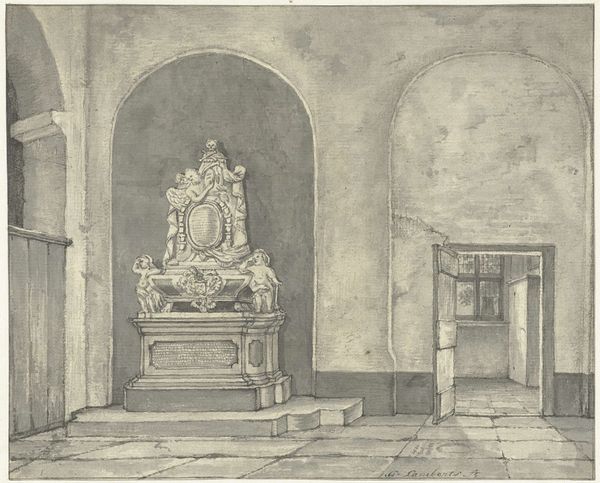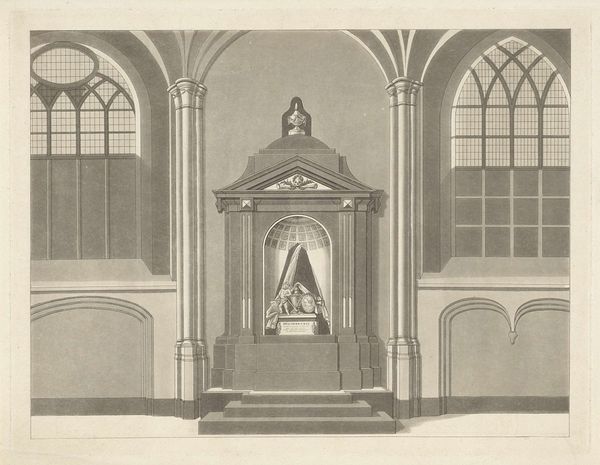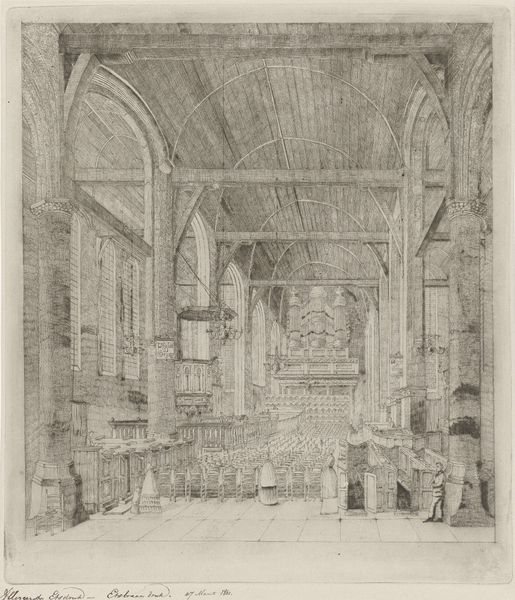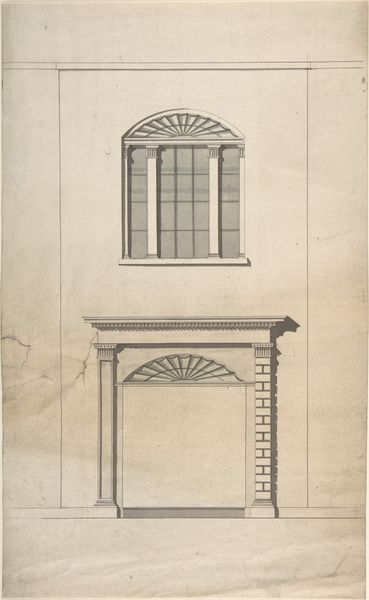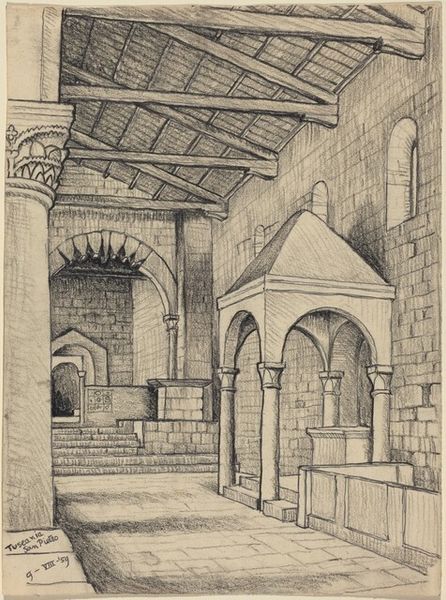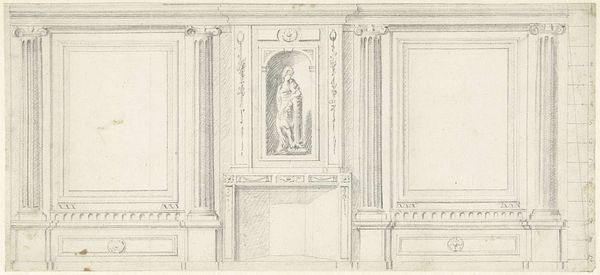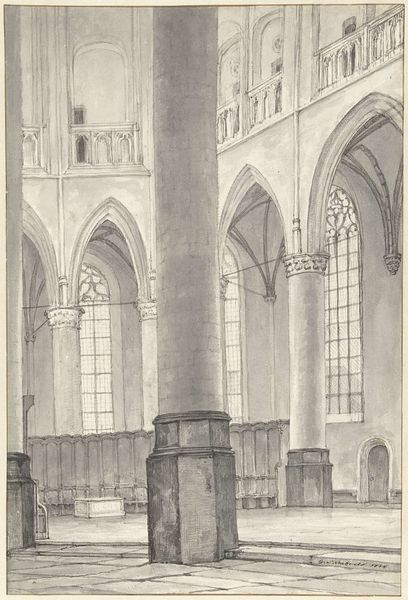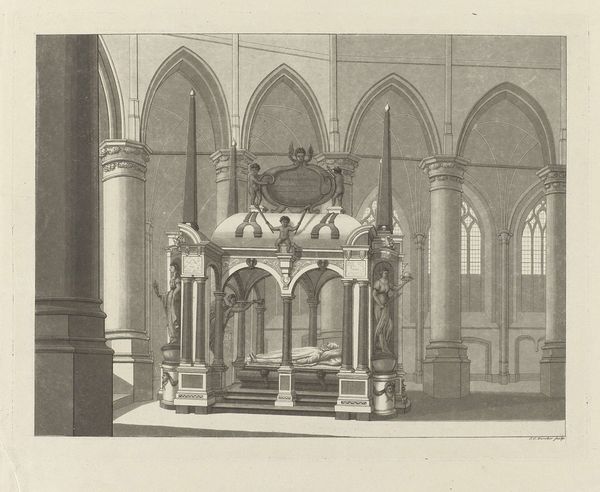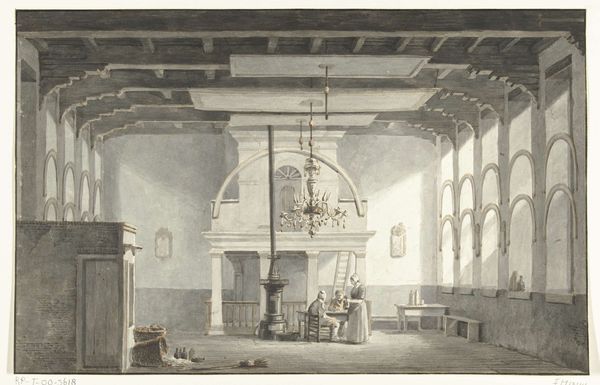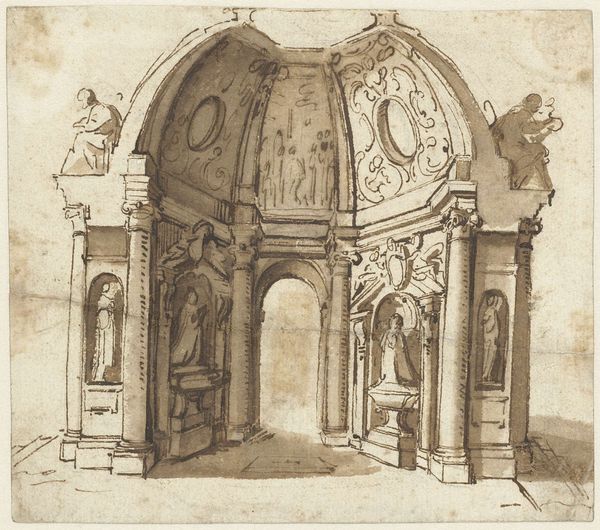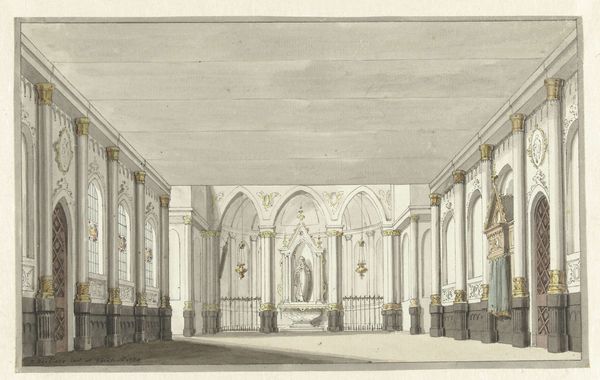
Toegang tot de kapel met de grafkelder van de Heren van Zandvoort, in de kerk te Zandvoort 1842
0:00
0:00
drawing, paper, ink, pencil, pen, architecture
#
drawing
#
quirky sketch
#
pencil sketch
#
sketch book
#
incomplete sketchy
#
landscape
#
paper
#
personal sketchbook
#
ink
#
idea generation sketch
#
sketchwork
#
pen-ink sketch
#
pencil
#
pen
#
storyboard and sketchbook work
#
architecture
#
realism
#
initial sketch
Dimensions: height 200 mm, width 206 mm
Copyright: Rijks Museum: Open Domain
Curator: This ink and pencil drawing by Gerrit Lamberts from 1842 gives us a glimpse into the church at Zandvoort, focusing on the chapel and burial vault of the Lords of Zandvoort. It’s currently held in the Rijksmuseum. What are your first thoughts? Editor: Somber, definitely somber. The grayscale palette, the architectural rigidity…it evokes a profound stillness. Notice how Lamberts frames the tomb entrance with those robust columns. The structure is clearly intended to convey permanence, maybe even eternity. Curator: The permanence of memory, certainly. The Lords of Zandvoort, though physically gone, are visually and symbolically present in the village church. Note the skull and perhaps a knightly emblem positioned at the top of the structure – visual reminders of mortality and perhaps social hierarchy. Editor: Right, a vanitas motif perched atop neoclassical formality. The juxtaposition creates a visual tension. And those meticulously rendered gothic windows allow light to enter. Are they illuminating the physical space or suggesting a transcendent plane? The contrast contributes to the overall effect of staged austerity. Curator: Gothic windows traditionally symbolize enlightenment, acting as conduits between earthly and divine realms. Here, their presence emphasizes a continuity – the ancestral past interweaving with the town's evolving religious and cultural identity. The vault embodies a kind of collective cultural memory. Editor: And technically, consider the sketchwork: the quick strokes capturing light on the columns, the more precise rendering of the window details…there is a fascinating oscillation between spontaneous notation and considered formal analysis. This tension, or ambiguity, amplifies its complexity. Curator: The artist seems less intent on pure representation and more interested in capturing the atmosphere and evoking symbolic weight. I find it fascinating how something rendered in such simple media can contain layers of societal implications. Editor: Agreed. It’s a testament to the potency of understated expression and the eloquence of formal composition. Even an unfinished sketch, such as this, allows us to ponder beyond the picture’s edge.
Comments
No comments
Be the first to comment and join the conversation on the ultimate creative platform.
